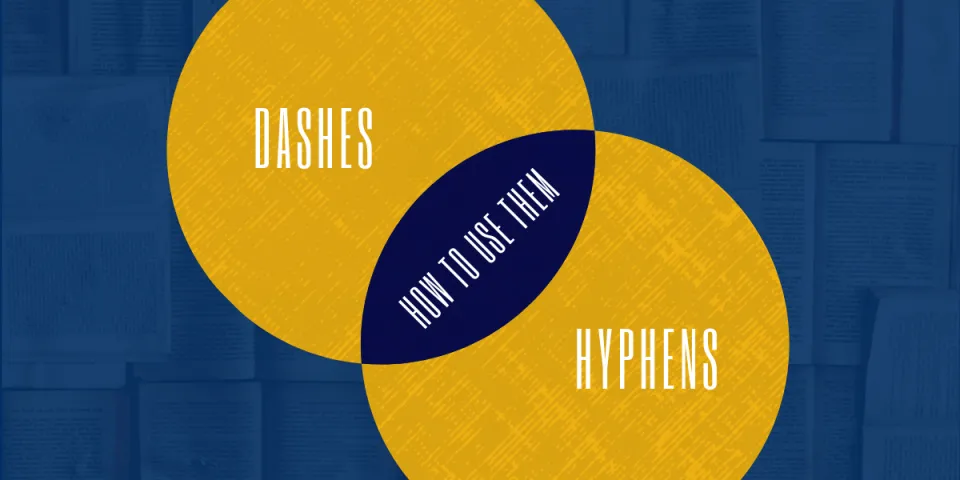Latest 
 Career Development Denise Alexander
Career Development Denise Alexander
Recent Blog Posts


Many students have trouble identifying the right time to use a dash or a hyphen. While the two look similar, they aren’t the same.
Let’s take a look at the different types of dashes you can use in your writing, and when and when not to use a hyphen.
An em-dash (also called a “long dash” or “thick dash”) is approximately the width of the letter “m,” which is where it earns its name. Here are some different situations when you can use an em-dash:
Dashes are often used to signal an abrupt change in a sentence, indicating that the reader should pay close attention to what comes next. A dash can be used to add emphasis at the beginning, middle or end of a sentence. Here are some examples:
While a comma can also be used to create emphasis, dashes signal a more dramatic or extended pause. It’s best to use dashes sparingly so that they have the intended effect on the reader.
You can also use dashes to separate a series or a list in the middle of your sentence.
Use a dash to signal attribution at the end of a quote.
Note: When typing em-dashes, always put a space before and after the dash.
Hyphens are not the same as dashes. They are used to make a connection between two words working as a unit, or when two words have a combined meaning. These are known as compound words. Examples include “Mother-in-law” or “pick-me-up.” These words are always hyphenated, no matter where they fall in a sentence.
Here are some other types of compound words that require a hyphen:
A compound adjective is used to modify a noun. In the following examples, the bolded words are part of a compound adjective that modifies the underlined noun.
You do not need a hyphen if the adjective or descriptive phrase comes after the noun.
Compound modifiers with present or past participles (often ending in –ing or –ed) also require a hyphen.
You should also use a hyphen when two nouns work together to form a verb. For example:
Some prefixes also require the use of a hyphen:
If you are not sure whether a hyphen is necessary, you can always consult your preferred dictionary.
An en-dash (also called a “short dash”) is half the width of an em dash, approximately the width of the letter “n.”
In some writing stylebooks, such as The Chicago Manual of Style and The MLA Style Manual for academic writing, en-dashes are used to show ranges in numbers and dates. For example:
In MLA style, en-dashes can also be used within institutional names, such as:
The AP Stylebook, used by most American newspapers as well as businesses and other institutions, does not recommend en-dashes.
Need to brush up on some other grammar basics? Check out our tips for using commas and semi-colons, or visit the Writing Center for one-on-one writing help!
BLS pay estimates calculate the median annual wage for various occupations. Per the BLS the median wage for an occupation is: "The wage at which half of the workers in the occupation earned more than that amount, and half earned less. Median wage data are from the BLS Occupational Employment and Wage Statistics survey." Bureau of Labor Statistics (BLS), U.S. Department of Labor, Occupational Outlook Handbook 2024. BLS median wage estimates do not represent entry-level wages and/or salaries. Multiple factors, including prior experience, age, geographic market in which you want to work, and degree level and field, will affect career outcomes, including starting salary and earnings as an experienced employee. Herzing neither represents that its graduates will earn the median salaries calculated by BLS for a particular job nor guarantees that graduation from its program will result in a job, promotion, particular wage or salary, or other career growth.
Get the latest news you need to know, from study hacks to interview tips to career advancement. Have it delivered right to your inbox biweekly.